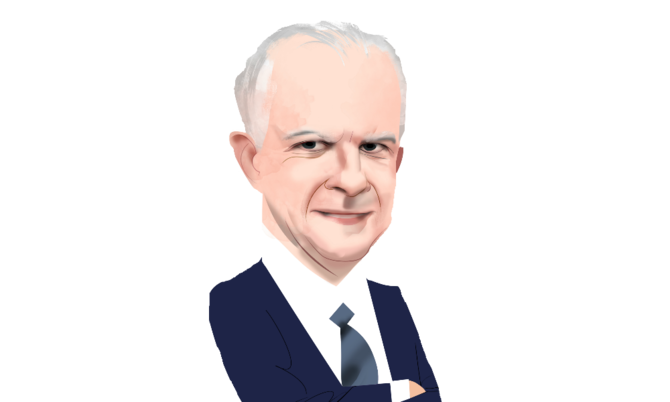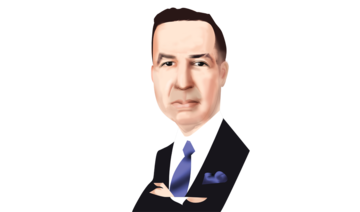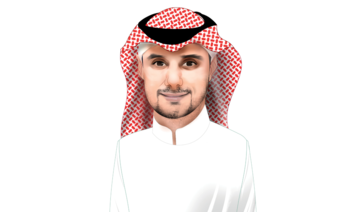John Carey wants ADNOC Distribution to be an “outside-in” company, meaning that what is all-important is how it is perceived by investors, trade partners and, above all, customers.
It is an approach that will be key as the Abu Dhabi fuel-retail business powers ahead in its expansion drive, which includes boosting the number of forecourts it operates in the key markets of Saudi Arabia and Dubai.
“At the end of the day everything we do gets paid for by the customers, and they are the biggest judge. We have to get people inside the company thinking: If we do this, will it add value to the customer, or is it just an internal project that can be ticked off,” Carey said.
After a career in the downstream side of the oil industry that included stints at BP in the US, Carey came to ADNOC just as the Abu Dhabi National Oil Company was preparing to spin off its retail and wholesale fuel business in a groundbreaking initial public offering (IPO), and since then the deputy CEO has been helping change the outside world’s perception of the business.
One aspect of that change is to increase the customer-facing side of the business, by physically expanding in its native UAE and by changing the nature of the forecourt experience. Gone are the days when it was all about “stop and fill” — now it is about “stop and shop.”
When the IPO was launched, some industry analysts were surprised at the size of the shopping element. The flotation on the Abu Dhabi Securities Exchange threw up the quirky fact that, rather than being all about petrol, oil and lubricants, ADNOC Distribution was actually the largest retailer in the UAE, by number of outlets.
Carey has spent the past few weeks on roadshows explaining the granularity of that proposition to the investors who snapped up 10 percent of the company, in London and New York, as well as in the UAE and other parts of the Middle East.
I want you to feel that on your way home you can get steak for dinner at your local gas station.
John Carey
It was a chance to tell how far the company had gone in fulfilling its IPO agenda. “When we did the IPO there were a lot of questions because we were one of the first to do it and it was a new leadership team coming together. There were questions on the governance and independence of a company from the UAE, so the roadshows were a good, timely effort to go back and look at what we said at the outset of the IPO and how we said we would do it. The good, the bad and the ugly of it,” he said.
“I think the overriding feedback was a little bit of surprise. Not surprise that we’d hit our financial objectives, but a bit of surprise at the amount of build-out of the strategy we’d made in the past 12 to 15 months.”
Investors were also impressed by the ambition of the financial plan, and — of course — by the dividend policy announced earlier this year that caused the newly listed shares to jump significantly. ADNOC Distribution is aiming for $1 billion in earnings by 2023, and has pledged $1.35 billion in dividend over the next two years.
The shares are not yet included in the MSCI indices, but could be if a further 5 percent of the company were sold, something that Carey said is “a question for the board, not for me.”
To achieve those targets, the business will have to take advantage of the recovery in retail and macro-economic conditions that UAE policymakers hope will lift the economy out of a period of recent “flat” growth.
“People were expecting more growth in the region. I think that growth will come with the investment, but we haven’t seen it to date,” Carey said.
Even against that background, the business has delivered. “We talked a lot about the resilience of the business. We showed 22 percent ebitda (earnings before interest, tax, depreciation and amortization) growth last year despite volumes being flat — and the importance of the non-fuel sector, the importance of the cost reductions, all that came through strongly,” Carey said.
Apart from the forecourt retail business, the rest of the Distribution arm’s operations are in supplying fuel and other oil products to government agencies, airlines and transport companies, giving Carey a good position from which to judge the strength of the national economy.
He believes there are signs of imminent recovery. “With the government stimulus package and all the activity that’s going on, we’re already seeing the green shoots within commercial, which is why we’re confident the retail will come back. We’re seeing the commercial volumes pick up, which is good for the region,” he said.
Much of the future expansion is expected outside ADNOC’s traditional Abu Dhabi heartland. Carey’s strategy involves expanding the business elsewhere in the UAE. It already has 70 percent of the market in the northern emirates, but the big prize is in Dubai, where — coincidentally — the local petrol station operator ENOC recently announced a big push itself.
With the two big beasts of the forecourts business going head-to-head in Dubai, it is reasonable to ask if the market can hold them both. Carey has no doubt.
“The Dubai market is a quite unserviced market today and there is space for expansion, and that’s good for both of us. If (you) look at the site volumes in Dubai, it’s among the highest in the world in terms of leases per site and the wait times. It is very high and when we’ve gone in there, we’ve seen a very good uptake of the ADNOC brand. I think it’s about the locations, and we hear that everywhere,” he said.
-------
BIO
BORN
•Kilkenny, Ireland
EDUCATION
•University College Dublin, Ireland
•Stanford University, California, US
CAREER
•Castrol, president of industrial lubricant services
•BP, VP of global strategic accounts
•BP, CEO of liquified petroleum gas business
•Castrol, CEO of business-to-business operations
•BP, president of West Coast products, US
•BP, senior strategy adviser, downstream products
•ADNOC Distribution, deputy CEO
-------
ADNOC has only four fuel stations in Dubai at the moment compared with more than 100 for ENOC. “So we see an opportunity. By 2023 there will be between 60 and 75 new sites,” Carey said.
The nature of the sites will change drastically. “The big push from us is around convenience retailing and growing the customer experience. By definition, our locations are going to be convenient for people who are stopping there.”
ADNOC has a partnership deal with the big French-owned retailer Geant on 14 UAE sites, which will operate as a core retail provider, much along the lines of the link-up between BP and Marks & Spencer in the UK.
“I want you to feel that on your way home from work you can get your steak for dinner; you don’t have to go to a big hypermarket and spend an hour queuing. You can get it from your local gas station because we have the quality and the freshness,” he said.
The formula of expanded forecourt retail offerings and other services will also be rolled out in Saudi Arabia, where the market is very different but the opportunities equally attractive. Carey recently opened two ADNOC stores in
the Kingdom, and more will follow, with local partners very much in mind.
In Saudi Arabia, ADNOC will again come up against ENOC, which has also earmarked the Kingdom for expansion, as well as Saudi Aramco, keen to enhance its position in the fuel retail business, as well as myriad smaller independent operators. The market is ripe for consolidation, Carey believes.
“It’s a hugely fragmented market today. The top five players account for about 15 percent, so I think what we’ll see in Saudi Arabia, like everywhere else in the world, there will be more and more consolidation,” he said.
“As retail standards improve, it will push out people at the bottom end of the market. I think there is huge space for new players in Saudi Arabia, I really do. It will be at the expense of, or together with, the ‘mom and pop’ stores.”
ADNOC in Saudi Arabia will offer a mix of company-owned outlets as well as franchised operations. “Saudi Arabia is such a big market, it would be difficult to have just one model,” Carey said.
The forecourt revolution is particularly applicable in the Kingdom, he believes, because the regulatory setup means that the fuel business is much lower margin than in the UAE, so value will come from offering a higher standard of customer choice and product. “We see a market that has not seen much investment for a while. Maybe in some areas there has been, but overall the quality of sites in Saudi Arabia is not to the level they want them to be,” he said.
The other thing that impressed international investors on the roadshows was the commitment to cost control that has been a feature of ADNOC Distribution’s post-IPO environment.
“One of our key targets is cost reduction and efficiency. We’ve done a nice job. The philosophy is that you don’t expect your customers to pay for your inefficiency, so we’ve taken costs out of the business — over $50 million of costs out in the past year, $50 million more this year and a further $100 million over the rest of the strategic period,” he said.
Carey and ADNOC have a clear vision for corporate strategy, and are sticking to it. With the priorities set and the focus fixed, he does not want to be distracted. Asked what is the biggest frustration of his job, he responded unhesitatingly: “Death by a thousand initiatives.”






















